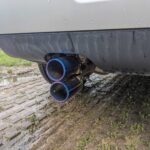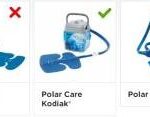Understanding the names of car parts is crucial for car owners, mechanics, and automotive enthusiasts alike. Whether you’re performing maintenance, diagnosing a problem, or simply expanding your automotive knowledge, knowing the correct terminology for each component is essential. This guide will clarify some common car part names and their functions, helping you navigate the world of auto mechanics with greater confidence.
Engine Components
- Power Valve: Primarily found in older carburetors, particularly four-barrel Holley carburetors, the power valve is a crucial component within the fuel enrichment system. It enriches the air-fuel mixture during periods of high engine load or acceleration, providing extra fuel for optimal power output.
- Return Spring: This spring plays a vital safety and operational role in the throttle mechanism. The return spring is responsible for physically pulling the throttle closed when the driver releases the accelerator pedal. This ensures the engine returns to idle and prevents unintended acceleration.
- Closed Chamber: Within the cylinder head design, the closed chamber refers to the combustion chamber area that is positioned directly above the piston. This design is characterized by the combustion chamber being largely contained within the cylinder head itself, promoting efficient combustion.
- Cylinder Bore Size (e.g., 30 over): In engine rebuilding and modification, “30 over” is a technical term indicating the extent of cylinder boring. It signifies that the cylinder bore diameter has been enlarged by thirty-thousandths of an inch (0.030 inches) from its standard size. This is often done to repair cylinder wear or to increase engine displacement.
- Deck: The deck of an engine block is the machined top surface of the block to which the cylinder heads are attached. This surface must be perfectly flat to ensure a proper seal between the engine block and the cylinder head, preventing leaks of compression and coolant.
- Hemi Engine: “Hemi” is short for hemispherical combustion chamber. It describes an engine design featuring a combustion chamber shaped like a hemisphere. This design allows for larger valves and a more direct airflow path, historically associated with high performance.
- Runner (Intake Runner): The runner, specifically the intake runner, is a passage within the intake manifold. It’s the pathway through which the air-fuel mixture (or just air in direct injection engines) travels from the intake manifold to the intake valve and into the engine cylinder. The design and length of runners can significantly impact engine performance.
- CCV Valve (PCV Valve): CCV stands for Closed Crankcase Ventilation valve, often referred to as PCV (Positive Crankcase Ventilation) valve. This valve is essential for managing engine blow-by gases. It vents these gases, which are combustion gases that leak past the piston rings, from the crankcase back into the intake manifold to be re-burned. This reduces emissions and prevents pressure buildup in the crankcase.
- EGR Valve: EGR stands for Exhaust Gas Recirculation. The EGR valve is an emissions control device that recirculates a portion of the engine’s exhaust gas back into the intake manifold. This dilutes the incoming air-fuel mixture, lowering combustion temperatures and reducing the formation of nitrogen oxides (NOx), a major air pollutant.
- COP (Coil-On-Plug): COP, or Coil-On-Plug ignition, is a modern ignition system design. Unlike traditional systems with a central coil and distributor, COP systems eliminate the distributor and use individual ignition coils mounted directly on top of each spark plug. This provides a more direct and efficient spark, improving ignition performance and reliability.
Fuel Injection Systems
Understanding the differences between fuel injection systems is also key to grasping car part functionality.
- Throttle Body Fuel Injection (TBI): Throttle Body Injection is an earlier type of fuel injection. Similar to a carburetor in function and placement, TBI uses one or two fuel injectors located in the throttle body, above the throttle plate. Fuel is injected into the incoming air stream as it enters the intake manifold. While an improvement over carburetors, TBI systems generally offer less precise fuel control compared to later systems.
- Multi-Port Fuel Injection (MPFI): Multi-Port Fuel Injection is a more advanced and efficient fuel injection system. MPFI systems utilize a separate fuel injector for each cylinder. These injectors are positioned in the intake runner, very close to the intake valve of each cylinder. This allows for highly precise fuel delivery to each cylinder, resulting in better fuel efficiency, improved engine performance, and reduced emissions compared to TBI systems. MPFI is generally considered superior to throttle body injection due to its enhanced control and distribution of fuel.
By familiarizing yourself with these Car Parts By Name, you’ll be better equipped to understand automotive discussions, diagnose car problems, and communicate effectively with mechanics. This knowledge is a stepping stone to deeper automotive understanding and confident car ownership.

